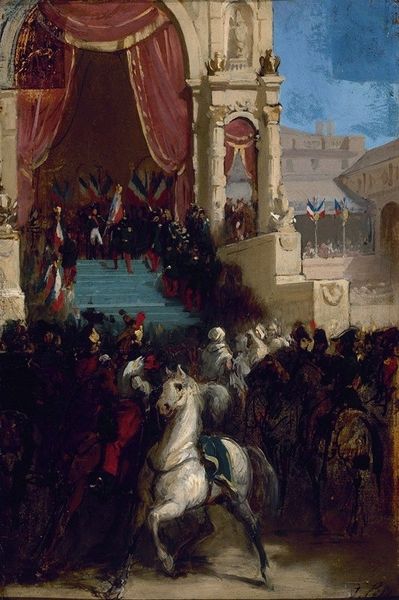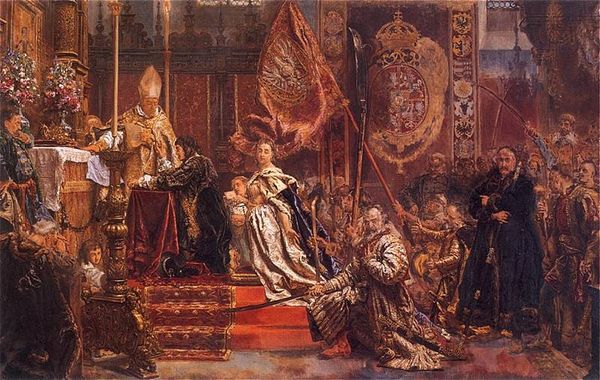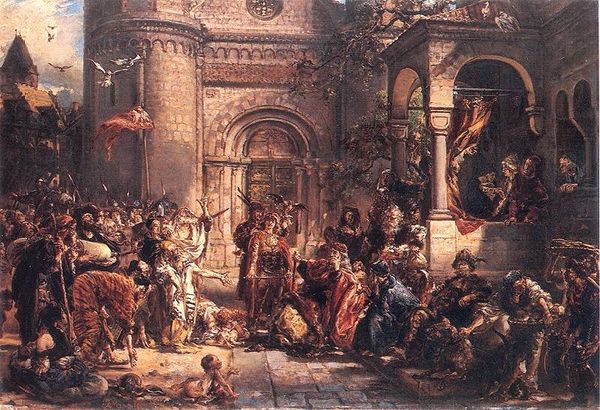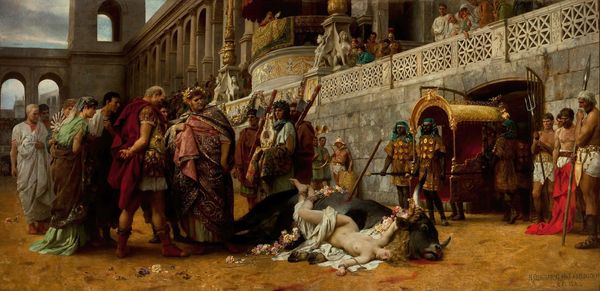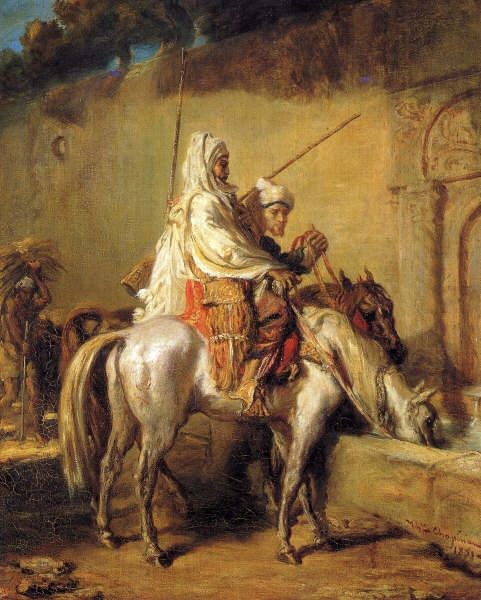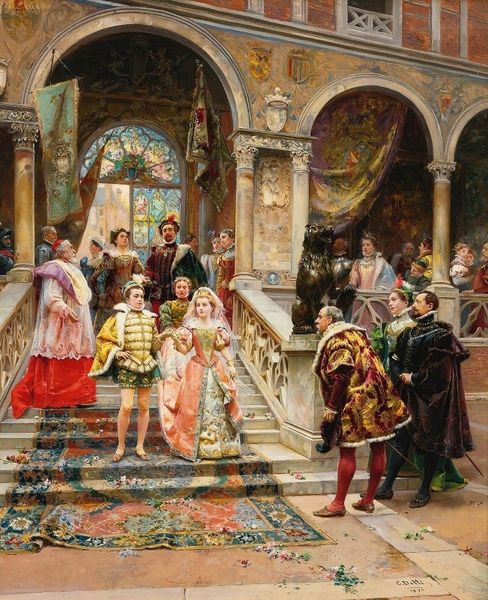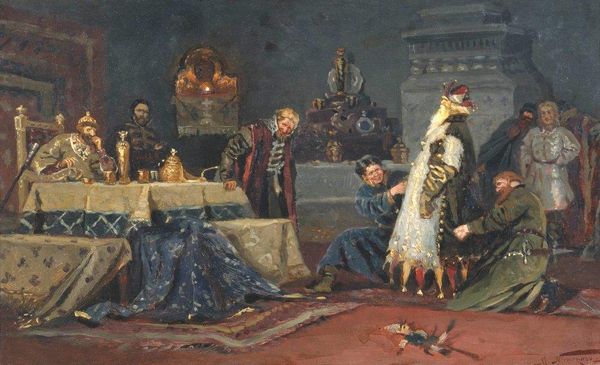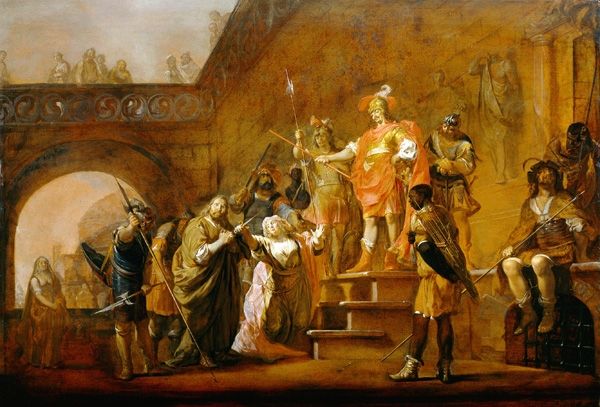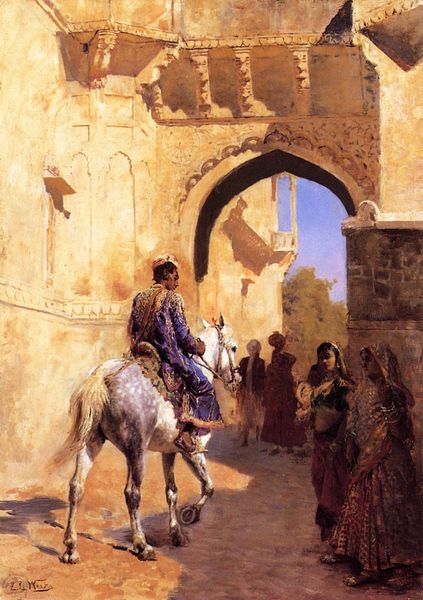
Copyright: Public Domain: Artvee
Editor: This is "To the Joust," painted by Cesare Auguste Detti in 1888, using oil paint. The detail is incredible; you can almost feel the weight of the armor. What stands out to you? Curator: The immediate draw is to the physical labor implied. Detti clearly relishes depicting the opulent textiles and metalwork—materials obtained, crafted, and sustained through complex social systems. Note how the play of light isn't just aesthetic, it emphasizes the sheen and value of those materials, and the labor involved in maintaining such sheen. Editor: So you're focusing on the production and effort behind what’s shown? Curator: Precisely. Consider the horse, not merely as transportation but a highly bred animal. What resources went into its lineage, training, care? What socioeconomic structures allowed for the pursuit of something as seemingly frivolous as a joust? Editor: I hadn’t considered the horse in that light! It’s easy to get lost in the romanticism, but that deflects from all the human and material cost. Curator: Indeed. And how that romanticism itself becomes a commodity, something bought and sold, a deliberate crafting of an idealized past for consumption in Detti's time. The artist becomes a manufacturer, selling not just skill, but also nostalgia. How do you see the materials playing into that reading? Editor: Now that you mention it, the oil paint itself seems to enhance that sense of richness, giving a glossy finish that almost imitates the actual fabrics and metals. It is creating desire through mimicking reality, isn’t it? Curator: It uses the very physicality of the oil medium to conjure those textures and social implications. It moves beyond just image to engaging with larger societal operations, from materials to labor. What have you gathered overall from considering those? Editor: I’ll definitely think more about the socio-economic aspect. Art isn't created in a vacuum; it uses resources representing power dynamics. It’s fascinating to peel back the layers of romanticism. Curator: Exactly! It transforms how we view history paintings in general, isn’t it?
Comments
No comments
Be the first to comment and join the conversation on the ultimate creative platform.
